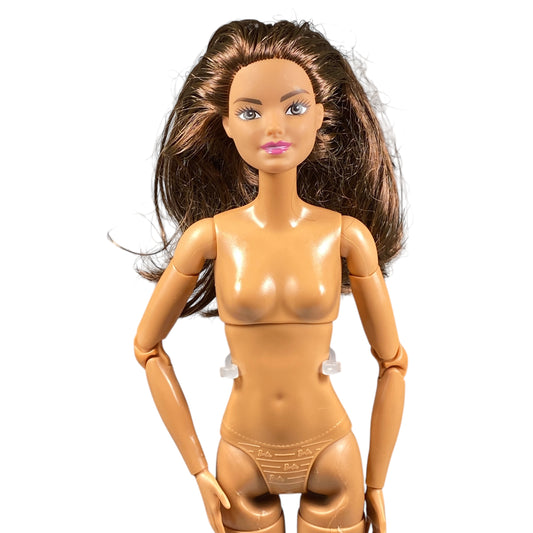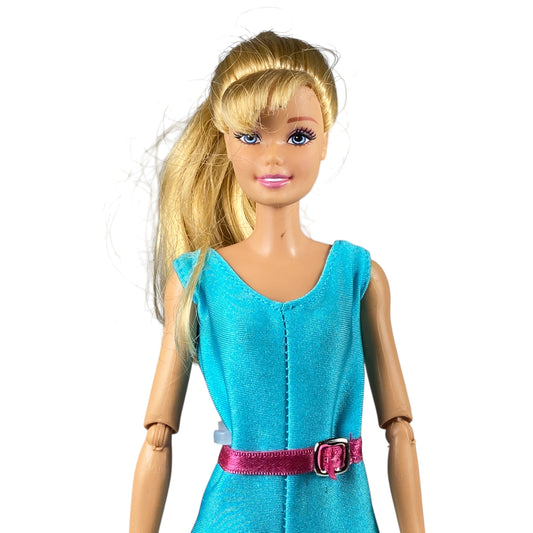The Legacy of Kira Barbie: A Collector’s Guide to Her History and Doll Releases
Share

For decades, Barbie’s diverse friend group has mirrored cultural shifts in fashion, beauty, and representation. Among these iconic characters, Kira Barbie stands out as a trailblazer for East Asian representation in the doll world. From her early days as a controversial “Oriental Barbie” to her sporty ’90s reinventions and limited-edition collector gems, Kira’s journey is a fascinating blend of nostalgia, cultural evolution, and doll-collecting magic.
This deep dive into her history, design shifts, and most coveted releases will resonate with both longtime fans and new collectors eager to uncover her story.
The Origins of Kira Barbie: From Controversy to Cultural Icon
Kira’s story begins not in the 1990s—her official debut decade—but in the early 1980s, a time when Barbie’s worldview was expanding beyond her Malibu dreamhouse. In 1981, Mattel released the Dolls of the World line, which included a doll named Oriental Barbie.
Clad in a traditional qipao dress and marketed as being from Hong Kong, this doll introduced what would later become known as the “Kira face mold.” The term “Oriental” sparked criticism even then, reflecting outdated labeling practices, but the doll’s delicate features—almond-shaped eyes, high cheekbones, and a closed-mouth smile—laid the groundwork for Kira’s future identity.
By 1990, Mattel rebranded the character as Kira, dropping the problematic terminology and giving her a fresh, sporty persona. She debuted in the Wet ‘n Wild line as Barbie’s adventurous friend who loved snorkeling, rollerblading, and beach outings.
This shift wasn’t just cosmetic; it marked a conscious effort to move away from stereotypes and toward individuality. Kira’s early ’90s looks, with neon swimsuits and windblown hair, captured the era’s love for bold, active fashion.

The Evolution of Kira’s Face Mold: A Study in Representation
Kira’s face sculpt is one of Barbie’s most recognizable, but its journey wasn’t straightforward. The original 1981 mold aimed to represent East Asian features but faced criticism for being overly generic. Over time, Mattel refined the mold to reflect regional diversity.
The 1980s: A Problematic Start
The Oriental Barbie of 1981 wore culturally specific outfits, like Japanese kimonos and Chinese qipaos, but her face lacked distinct cultural markers beyond broad strokes. Collectors today view these dolls as historical artifacts—flawed but foundational.
The 1990s: Kira Finds Her Voice
In the ’90s, Kira’s face softened. Makeup became more natural, with pastel eyeshadows and glossy lips replacing the dramatic ’80s looks. Hairstyles also evolved: think high ponytails with scrunchies or beachy waves tucked under visors. Dolls like Surf City Kira (1992) and All American Kira (1991) emphasized her athleticism, pairing her with tennis rackets, rollerblades, and even a miniature Reebok sneaker collaboration.
The 2000s and Beyond: A Collector’s Muse
After being phased out of mainstream lines, Kira’s mold resurfaced in limited-edition collections. In 2015, Filipino designer Carlyle Nuera used the sculpt for Barbie Mutya, a doll dressed in a terno gown inspired by Philippine folklore. This reinvention showed how the once-generic mold could celebrate specific cultural narratives.
Kira’s Most Iconic Doll Releases: A Decade-by-Decade Breakdown
The 1990s: The Golden Era of Sporty Chic
Kira’s ’90s dolls are peak nostalgia for Millennial collectors. These releases leaned into her love for outdoor adventures:
-
Wet ‘n Wild Kira (1990): Her official debut! This doll came with snorkeling gear, a neon pink swimsuit, and a towel printed with tropical fish. The packaging showed her mid-splash in a pool, cementing her “cool, active friend” vibe.
-
All American Kira (1991): A tennis-themed doll with a pleated skirt, visor, and tiny Reebok sneakers. In Europe, she was renamed Weekend Marina, causing confusion among collectors.
-
Butterfly Art Kira (1998): A cult favorite, this doll included temporary butterfly tattoos and a denim outfit. Parents initially balked at the tattoos, but today, unopened sets sell for over $200.
The Late ’90s/2000s: Glamour Takes Over
As the Spice Girls and Clueless influenced fashion, Kira got a Y2K makeover:
-
Sapphire Splendor Kira (1997): Designed by legendary costumer Bob Mackie, this doll wore a velvet gown with sapphire accents and a feathered headpiece. Only 5,000 were made, making her a holy grail for collectors.
-
Very Velvet Kira (1999): A rare formal look with a crimson ballgown and intricate velvet detailing. Many of these dolls suffered from “velvet decay” over time, so mint-condition ones are prized.
-
Bling Bling Kira (2000): Part of the Picture Pockets line, this doll included “bling” stickers for customizing her outfits. Her bedazzled jeans and crop tops scream early 2000s.
2010s Revivals: Nods to Heritage
Kira’s mold returned in collector-focused lines that honored cultural roots:
-
Barbie Mutya (2015): A collaboration with Carlyle Nuera, featuring a gold-and-blue terno gown inspired by Filipino mythology.
-
Silkstone Kira (2018): A limited-edition doll with a retro ’60s mod look, part of Barbie’s high-end Silkstone series.

Why Did Kira Barbie Disappear?
By the mid-2000s, Kira quietly faded from Barbie’s core friend group. Mattel introduced new characters like Leah and Kayla, who shared her athletic personality but had updated face molds. However, her disappearance only fueled collector demand.
The Nostalgia Factor
For ’90s kids, Kira represented a relatable alternative to Barbie’s glamour. She was the friend who’d rather hit the skate park than a fashion show, making her a symbol of childhood freedom.
Rarity Equals Value
Post-2000 Kira dolls were produced in smaller quantities, especially international releases like Galaxy Marina (a Europe-only space-themed doll). Today, even common ’90s Kiras can fetch $50–$100 if they’re in good condition.
How to Spot Authentic Kira Dolls: A Collector’s Checklist
With rising interest in vintage toys, reproductions and scams have surged. Here’s how to ensure you’re buying the real deal:
-
Check the Face Mold: Authentic Kira dolls have a closed-mouth smile, almond-shaped eyes, and a rounded jawline. Later dolls (post-2005) might use similar molds but lack the “Kira” name on packaging.
-
Look for Date Stamps: Most dolls have a year stamped on the back of their head or lower back. Pre-2000 stamps often include “© Mattel” and the country of manufacture.
-
Study the Fashion: Kira’s ’90s outfits used specific fabrics like spandex blends for swimsuits and velcro closures for shoes. Modern replicas often feel flimsier.
-
Beware of “New in Box” Scams: Sealed ’90s dolls should have slightly yellowed plastic windows or faded box art. Pristine packaging could signal a reproduction.
Styling Inspiration: How to Display Kira Barbie Dolls
Part of Kira’s charm is her versatility. Here are creative ways to showcase her in your collection:
-
Beach Vibes: Group her ’90s swimsuit dolls with mini surfboards, sand dollars, or a DIY diorama of a retro poolside.
-
Sporty Nostalgia: Pose her tennis or rollerblading dolls on acrylic stands with vintage sports gear (think tiny skate keys or tennis ball cans).
-
High Fashion: Display Bob Mackie’s Sapphire Splendor Kira under a glass cloche to protect her delicate fabrics.
Why Kira Barbie Matters Today
Kira’s legacy is twofold: she paved the way for diverse representation in toys and became a symbol of ’90s nostalgia. For collectors, she bridges the gap between Barbie’s past and present, offering tangible connections to cultural milestones.

A Reflection of Progress
While her early iterations were flawed, Kira’s evolution shows how toy companies can learn from missteps. Modern dolls like Barbie Mutya prove that cultural representation thrives when designers collaborate with communities.
The Thrill of the Hunt
Tracking down rare Kira dolls—whether at flea markets or online auctions—is a rite of passage for collectors. Each find feels like unearthing a piece of history.
Where to Find Kira Barbie Dolls in 2025
While mainstream stores no longer carry vintage Kira, these avenues are goldmines:
-
Local Toy Conventions: Dealers often bring rare ’90s dolls to events like Dollycon or Barbie Fair.
-
Etsy and eBay: Search terms like “vintage Kira Barbie” or “1997 Sapphire Kira.” Filter for “used” condition to avoid marked-up resellers.
-
Japanese Vintage Stores: Kira was hugely popular in Japan, so stores like Mandarake often stock well-preserved dolls.
Final Thoughts: The Timeless Allure of Kira
Kira Barbie is more than a doll—she’s a time capsule. From her awkward beginnings as “Oriental Barbie” to her glamorous Bob Mackie era, her story mirrors the growing pains of cultural representation in toys. For collectors, she offers a tangible link to childhood memories and the thrill of preserving history. Whether you’re drawn to her sporty ’90s charm or her haute couture transformations, Kira’s dolls remind us that playtime can be both fun and meaningful.
So grab your magnifying glass and start hunting; your next treasure might be a sun-bleached Kira waiting to share her story.




